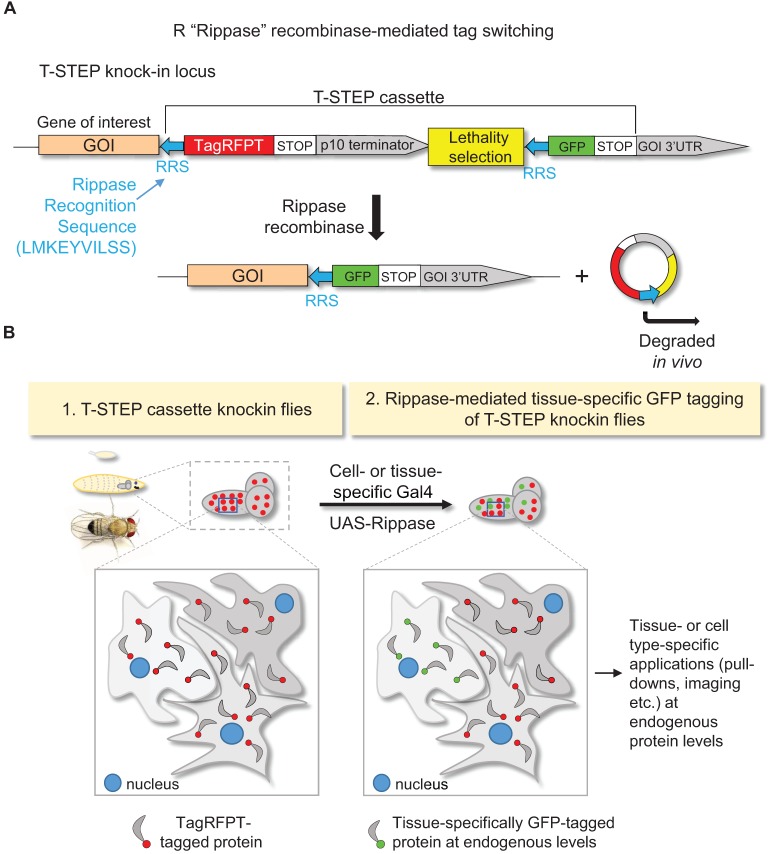Fig. 2.
Conceptual design of the tissue-specific tagging of endogenous proteins (T-STEP) method. (A) Schematic outline of the genomic locus after T-STEP cassette knock-in using gene targeting. Translation of the targeted protein yields a TagRFPT-tagged protein with the translated Rippase recognition sequence, RRS, serving as a short peptide linker. Upon tissue-specific expression of Rippase the DNA sequence between the tandem RRS sequences is excised and degraded, rendering the protein of interest GFP-tagged and under fully endogenous 5′ and 3′ regulatory elements. The lethality selection module (in yellow) is used only during the gene-targeting step. (B) Before Rippase expression, the targeted protein is TagRFPT-tagged in all cells where it is naturally expressed. Tissue- or cell-type specific protein labeling is achieved by Rippase expression in the desired cell- or tissue type using the UAS-Gal4 system.

